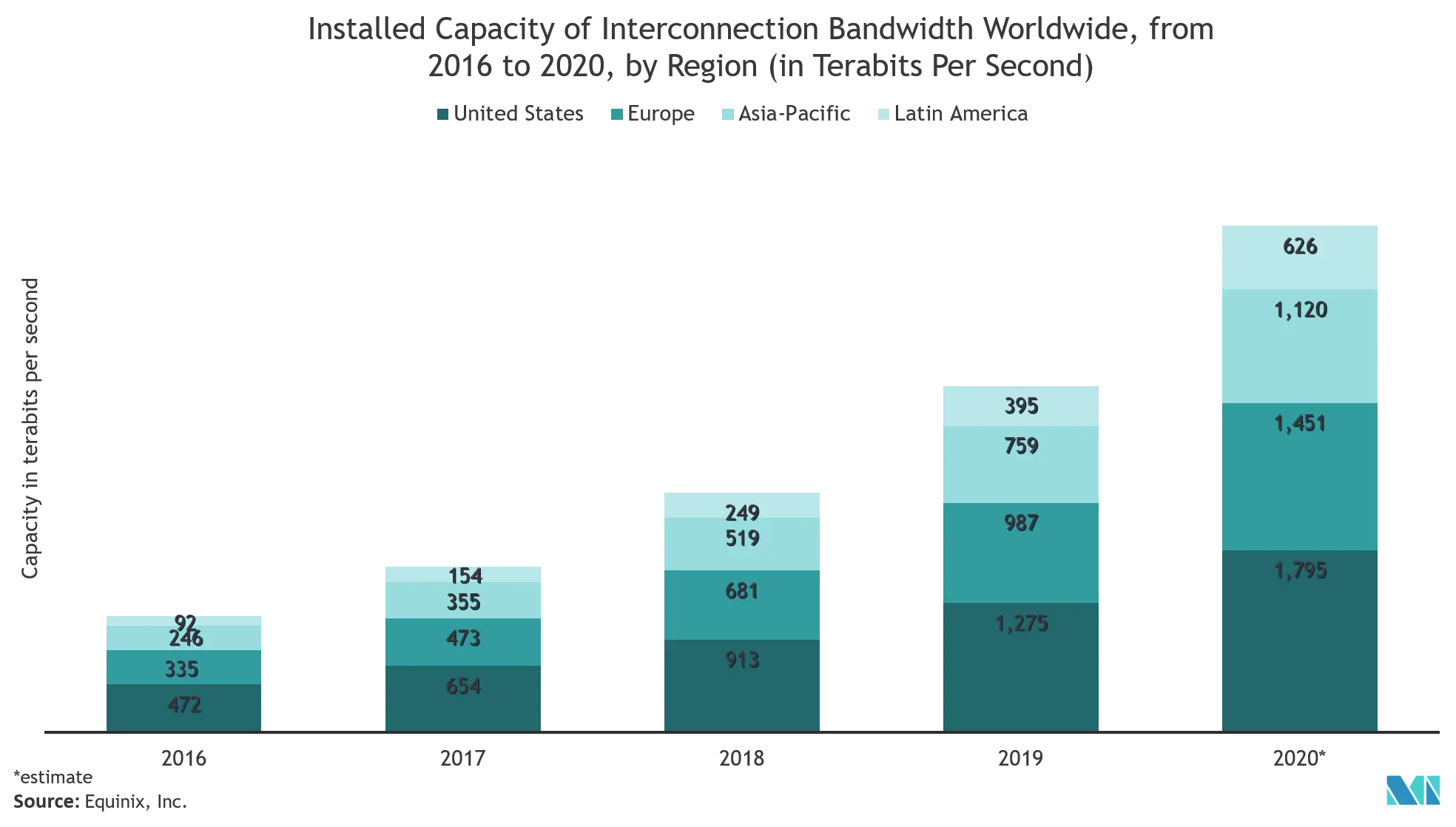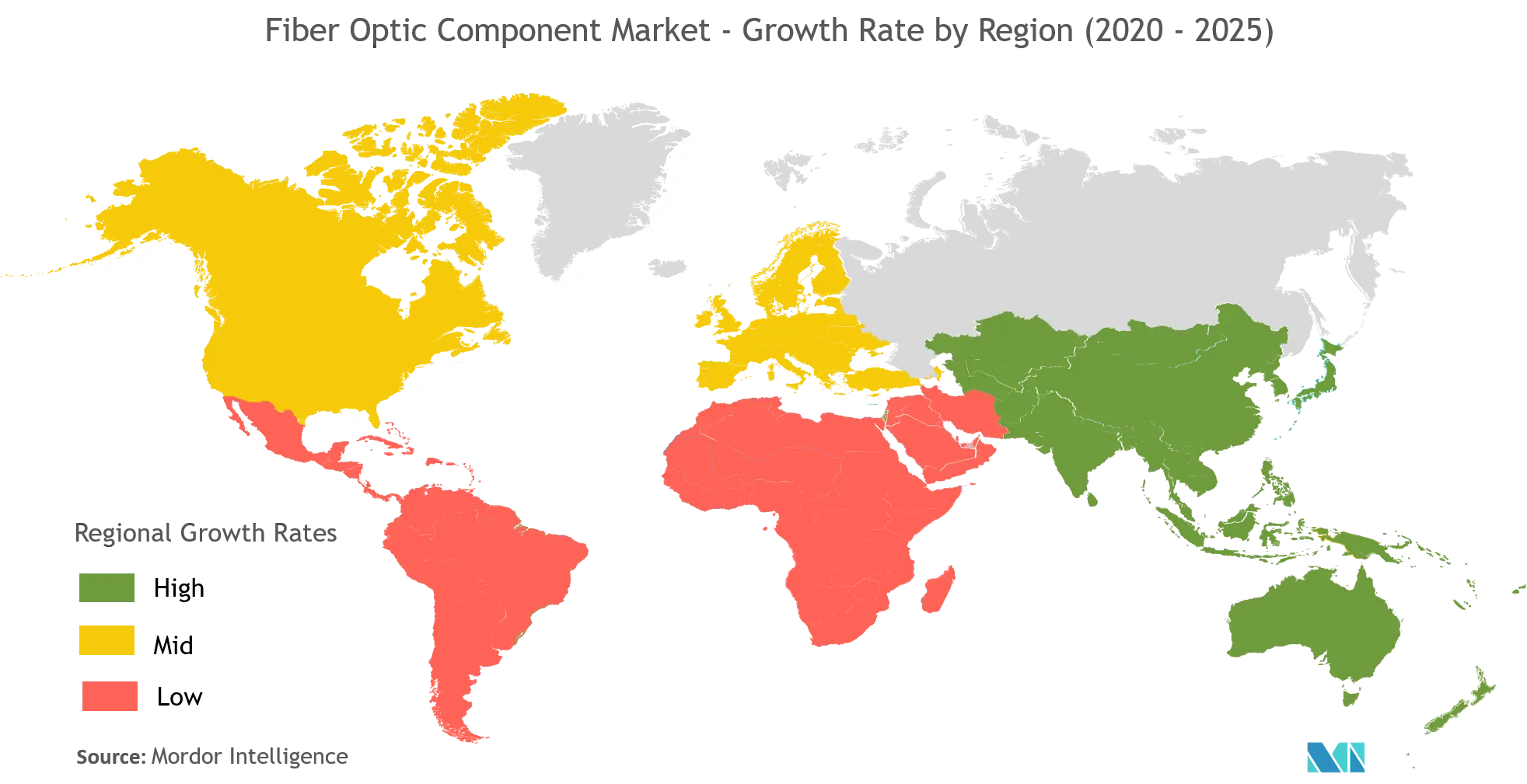Market Trends of Fiber Optic Component Industry
This section covers the major market trends shaping the Fiber Optic Component Market according to our research experts:
Fiber Optic Cables to Dominate the Market
- As the internet continues to expand at an exponential rate, so does the demand for increased bandwidth. The global demand for higher internet bandwidth is presenting lucrative opportunities for the fiber optic cable vendors, encouraging the market growth, as, according to Equinix, by 2020, the total global interconnection bandwidth is projected to increase from 1,144 terabits per second in 2016 to 4,991 terabits per second by 2020.
- According to ITU in 2019, the number of internet users worldwide was 4.13 billion, up from 3.92 billion in the previous year. A vast amount of information is conveyed across the internet each day, with information forms such as multimedia and video on the rise. The result is a need for a communication infrastructure such as fiber optic cables that can handle vast quantities of data and deliver this effectively on a global scale.
- The use of light within fiber optic cables offers several security benefits compared to a traditional copper cable. This is why they are increasingly favored in today’s world, as there is a greater focus than ever before on protecting sensitive data.
- As a survey by NortonLifeLock Inc. says that over 90% of global online users had at least one significant concern about data privacy, 47% of respondents were worried about their personal information, and an additional 40% of worldwide respondents stated discomfort about sensitive personal information being sold to third parties.
- Fiber optic cables are essential within a 5G network infrastructure. To achieve a real 5G revolution, fiber optic cables are essential. 5G is based on a small cell model that brings connectivity closer to the end-user. This short cell model requires a crucial fiber optic cable backbone to deliver a cohesive internet experience.
- According to GSMA, the number of 5G connections is projected to grow to 1.1 billion by 2025 globally, and as per the same source, 5G connections will account for around 50% of total mobile connections in developed Asia in 2025. Ericsson stats say that in 2020 the number of 5G mobile subscriptions is forecast to rise to around 18 million in North America. Recognizing all these growth and advancements in 5G connections and its network infrastructure, the market for fiber optic cables is expected to boost.
- As fiber optic technology has advanced, several use cases have been identified across various industries. The medical industry has traditionally utilized fiber optics for illumination, image transfer, and laser signal delivery. In the Aerospace sector, fiber optics are increasingly looked to as the solution for increasing commercial flights' connectivity.

APAC to Drive the Market
- APAC is foreseen to accommodate the largest size of the fiber optic components market during the forecast period. The growing industrialization and infrastructural advancement in this area have given immense opportunities to apply fiber optic components in multiple applications in APAC. Additionally, the increasing use of fiber optics in the medical sector presents growth across countries, such as China, Japan, and India. This is propelling the overall demand at a significant rate.
- Additionally, the growth in demand for fiber optic components in the Asia Pacific is mainly driven by the substantial growth opportunities available, supported by the growing number of fixed broadband subscribers in the regions. Also, increasing demand for larger bandwidth for faster network connectivity and massive untapped opportunities offered by the vast population base in the Asia Pacific is further fuelling the fiber optic component market.
- According to Internet World Stats, geographic analysis of the audience found that China accounted for 37.1% of internet users in Asia as of May 2020, followed by India with 24.3%. China's internet penetration reached 58.4% in that year. Moreover, as per World Bank stats, in 2020, Southeast Asia was the region throughout the Asia Pacific, which had the highest internet penetration, in which 66% of the total Southeast Asian population used the internet. In comparison, internet penetration in South Asia was 48% in 2020.
- Many governments of developed nations, like China and Japan, are investing in high-speed networks and are quickly transitioning from traditional networks to high-speed FTTH (Fiber to the home) networks. Thus, the liberalization of regulatory systems and support from governments for digitization push is poised to benefit the fiber optic component market growth.
- Additionally, the consistent increase in the use of smartphones and internet facilities in the region adds to the adoption of optical fiber components for telecommunication applications. Also, 5G connections (excluding IoT) are anticipated to reach USD 670 million in Asia-Pacific by 2025, accounting for approximately about 60% of the global 5G connections, according to GSMA.


